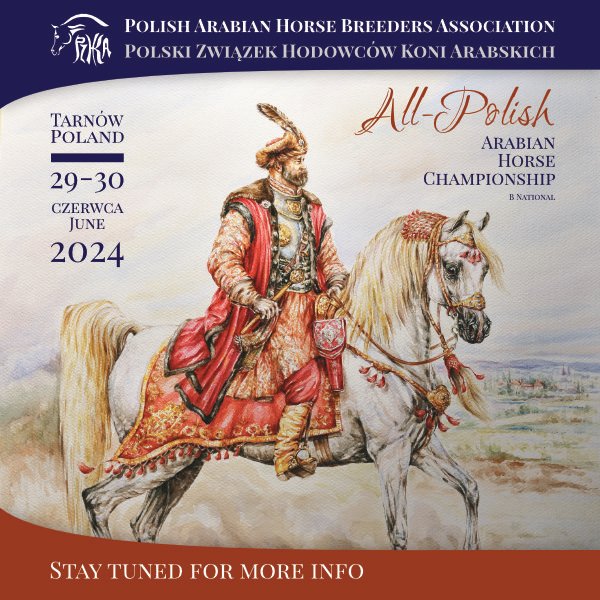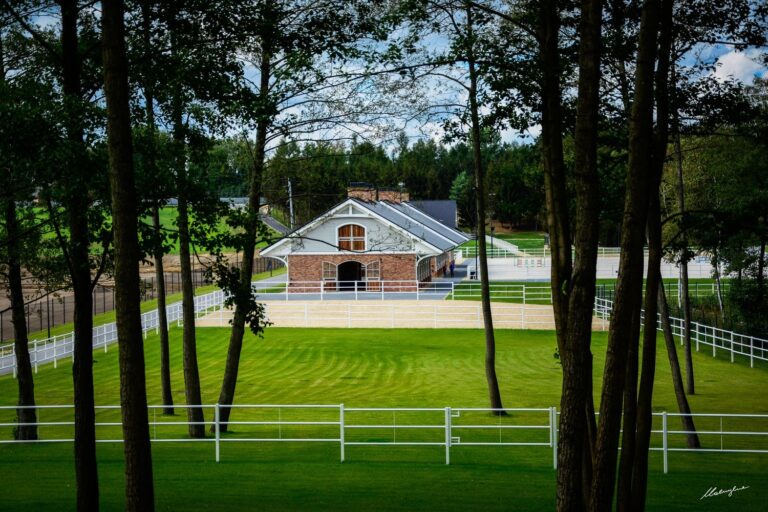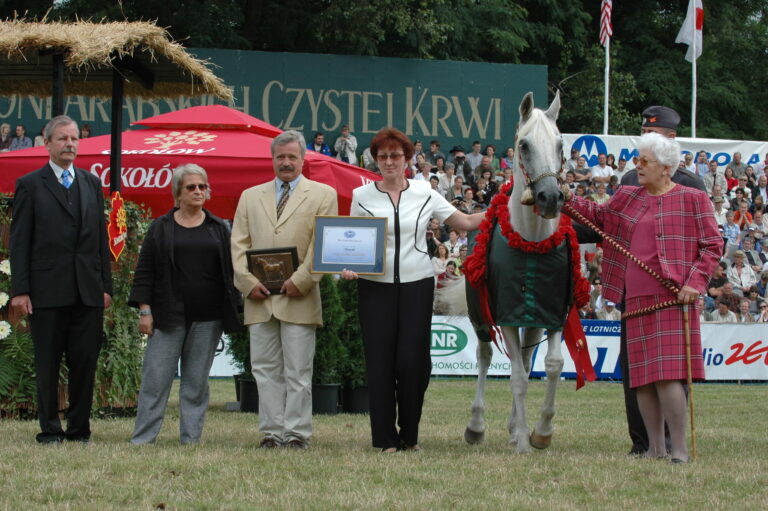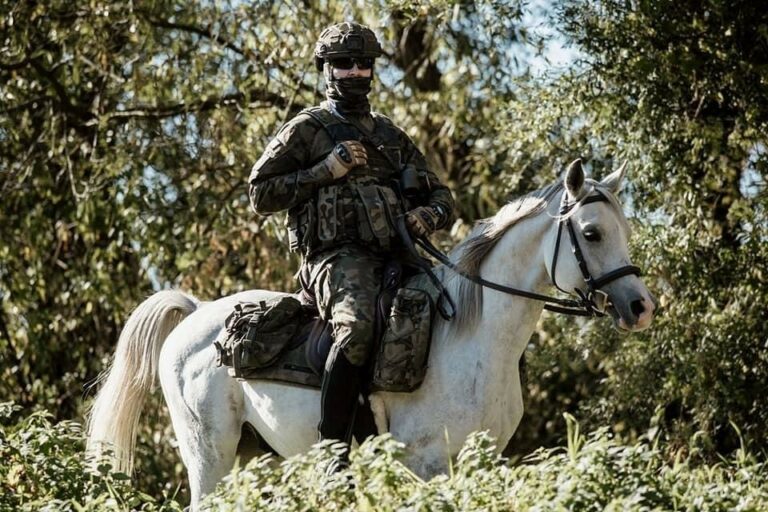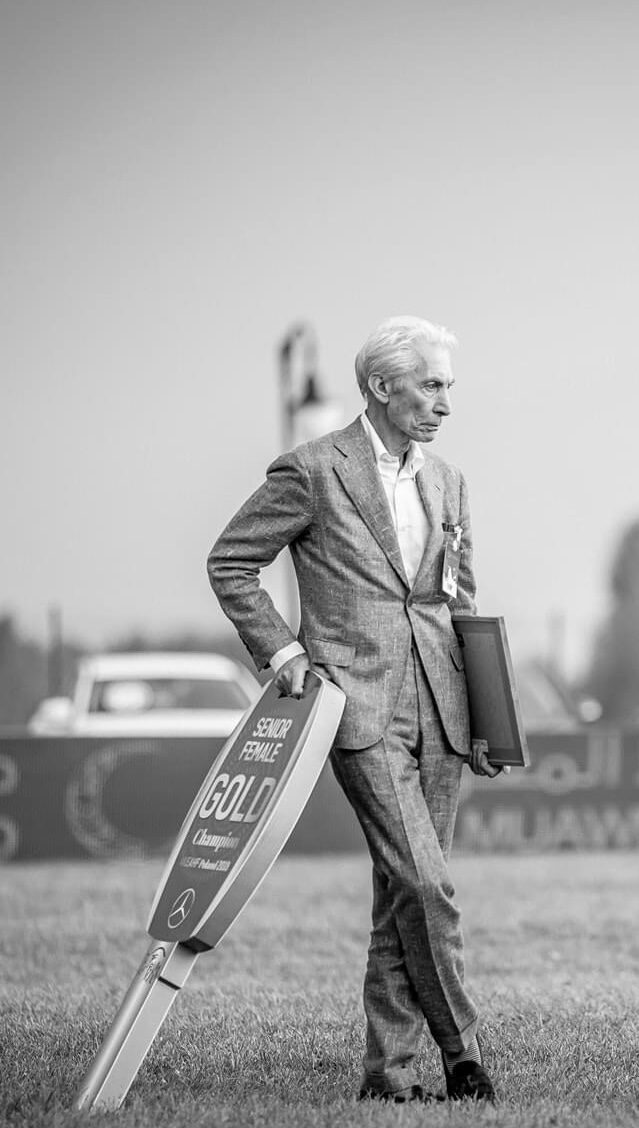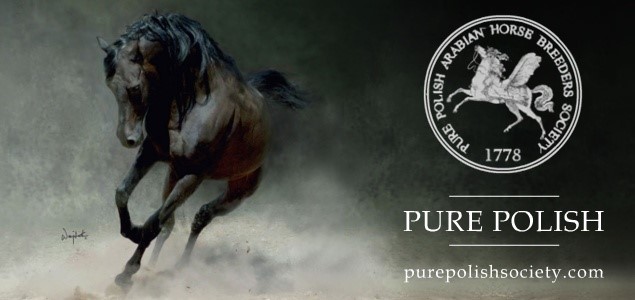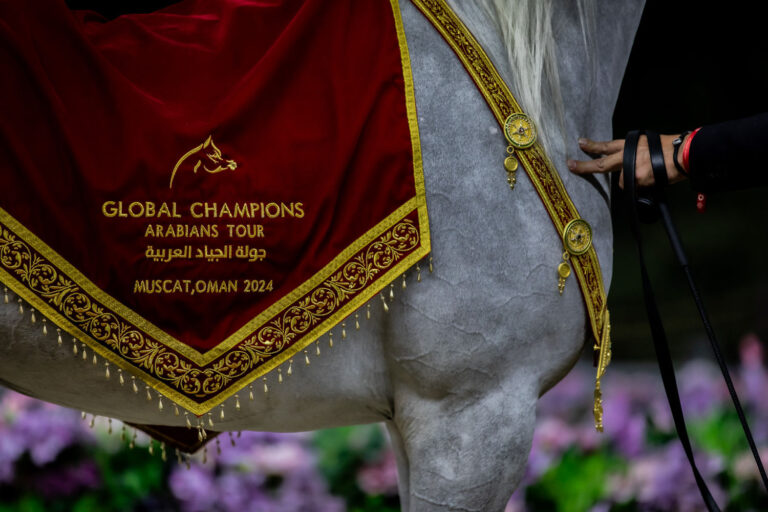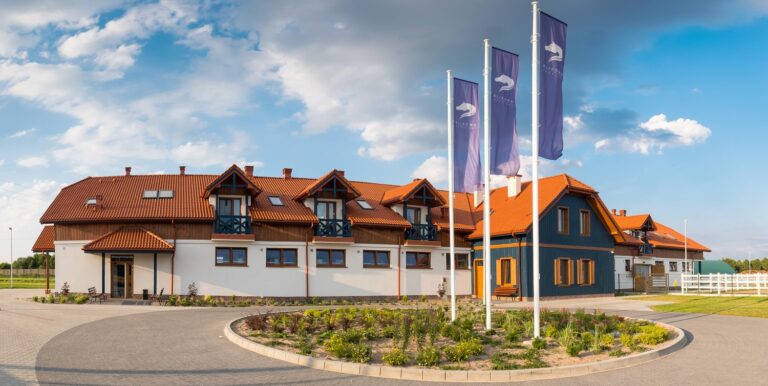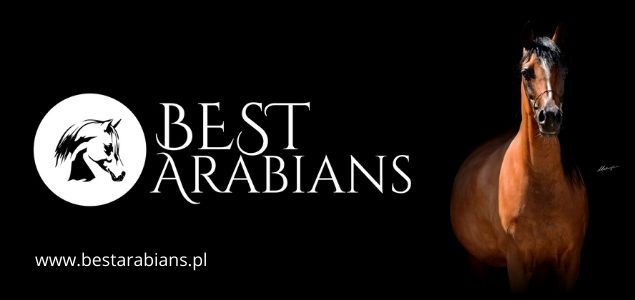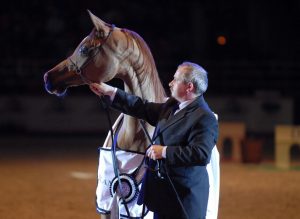
Liked by all, he endears with modesty and warmth, willingly sharing his knowledge and experience.
„I advise beginners what I myself once heard from a good trainer, Mr. Andrzej Orłoś, when I was still absorbed with horse riding. At an instructors course (I have qualifications of a Polish Equine Federation sport instructor) he instilled a principle in me: do not imitate blindly all that a given trainer does, even if he achieves fantastic results. Rather try picking, from a couple of different experts which you admire, their best traits and implement them into your own form of training. I say the same to the young people in relation to myself: listen, do you like what I do? Does it make sense? Then take that from me. But don’t copy my every move. Because training horses is a combination of sign language and body language.”
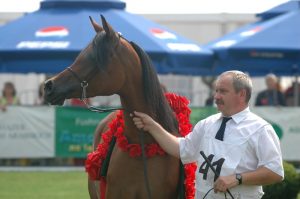
Other handlers speak about Mariusz Liśkiewicz with admiration: „I would like to be in a position to be able to enter the arena as many times as Mr. Mariusz Liśkiewicz”, says Marek Demczuk. “He is a true authority for me. He impresses me with his work, the engagement in what he does. He is also great as a friend, not keeping his phenomenal knowledge to himself, but sharing advice when needed”.
„He is an example for me”, chimes in Szymon Głowacki. “I consider him to be one of the greatest handlers in the world. You can learn a lot from him, especially since he is very open to conversation”.
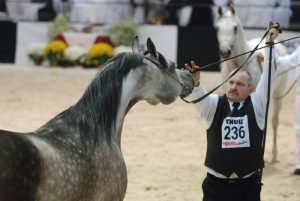
From Ekstern to El Dorada
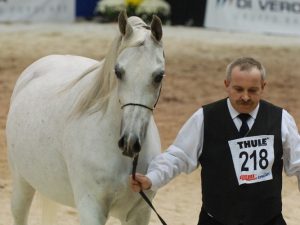
„At the time there were such great trainers and handlers as Tadeusz Wojtal, Scott Benjamin, Krystyna Podlejska, Lucjan Kulczyński”, he reminisces. “We were showing more than a dozen colts. The competition was strong, the best Monogramm get: Ganges, Emanor. Edeon was also considered a sure winner. The inconspicuous Ekstern, considered first to get the axe, was given to me at random. I did not train him for the shows and prior to Białka I had him perhaps five times in my hand. We ran onto the arena. He stopped somehow. How I accomplished that, I don’t remember. He moved remarkably, I tried not to interfere and all the judges gave him 20s for movement. The competition was extremely strong, and still he won. That’s when something hit me: maybe I will be doing this! Although I hadn’t the slightest idea about training itself”.
Later a long road led Mariusz Liśkiewicz from that first win to the world successes of his favorite El Dorada, which he calls “the horse of his life”. Just as long was the earlier road of a boy from Krasnystaw until the day he took a liking to this discipline thanks to Ekstern.
As he admits, the love for horses is in his genes, inherited from his mother. She was an Animal Husbandry graduate and worked as a teacher at the local agricultural technical college. As part of the animal breeding program she went with each class to the nearby Białka, so that the students could see for themselves how a depot looks like and functions. At the same time they met with the director, then Kazimierz Guziuk. Those were the first contacts with real breeding, not accessible at that time to regular people.
„I liked it so much that I began going to Białka as a volunteer. At that time there was no riding school, you didn’t pay for riding. But if someone wanted to learn, then from seven to nine in the morning were riding lessons, which you “paid for” later cleaning the stallions. That way I managed to get myself in”.
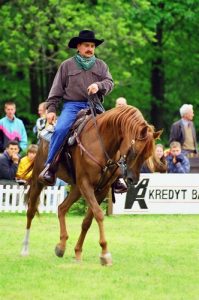
The trend at the time was show jumping. In 1984 Liśkiewicz competed in regional events and got into the Polish National Student Team. The representation went to Lundt in Sweden for the unofficial student championships. Individually he placed second. It was his first sport achievement. A year later he competed in the Polish students’ championships in dressage, in 1986 he took first place in team show jumping.
„And when Arabian horses appeared in Białka, we started doing endurance”, he recounts. “We did pretty well in the beginning, because we even had some titles of Polish Champion pop in. I was always just close. For example at the first official Polish Championships in Endurance Racing in 1990 I rode atop the stallion Borysław. Two days at 100 km each. After the first day I had an advantage of about 20 minutes. All I had to do was to ride past the finish line the next day with the other horses (not later than that contestant who finished that part at second place) to win. And the horse went lame 30 km before the finish line. I was disqualified. The stallion returned to the stable and… he was not lame anymore. We competed a lot at that time, with Jerzy Urbański, Wojciech Kowalik among others. We went to the World Endurance Championships in Spain, European Championships in England, Switzerland”.

„Each year I presented a small group of horses. From time to time as an additional job I received a couple which had to be trained to match the skills of the others in the show group. It was only in the years 1998-1999 that I began training a larger number of them”, he explains.
He trains Arabian horses for shows professionally since 2000. That’s when the “Monogramms” trained and shown by him surfaced at the international arenas. He stopped doing endurance.
„I stumbled across a group of really good horses”, he admits. „They began competing already five years earlier, but then the Polish Championships were the limit. Young horses seldom journeyed abroad. They started being noticeable in the world only just from 1999”.
From that moment Michałów’s brand became enriched with a new, recognizable asset – a trainer, who today is a brand all by himself.
Training in the USA
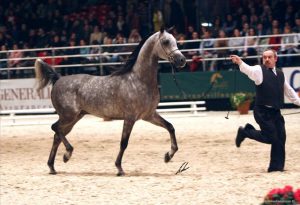
„The entire conditioning and training was done by Jerzy Zbyszewski with his assistants”, reminisces Liśkiewicz. “After the end of my chores I observed from the side what they do and why. Then I asked why this way and not differently, because I was used to the European style”.
The second meeting with training in American style came a couple of years later at Greg Gallun’s farm in Santa Ynez. A different climate, different conditions, a swimming pool for horses, training strictly for showing in hand (halter classes). During January and February Liśkiewicz observed day by day the final touches of a year’s preparation of about 30 horses for the biggest show of the year in Scottsdale, which commences the American season.
„The style of training was different, stronger. Greg is a professional of the highest league and I very much liked what he did, how the horses positioned for him. We could speak a long time about his methods, but regardless to what many think they are not so drastic. It is a hard school, more German than American. But he will never hit a horse, no matter what. If the animal does something really wrong and repeats it a couple of times, it will be punished, but it is not as people would think “a short rope and long whip”: that for every disobedience or mistake there is a punishment. The consistency of this guy is truly admirable. I saw the effects later in the training, also taking active part in it.”
The third visit to the US, second at Greg’s, was of a completely different nature.
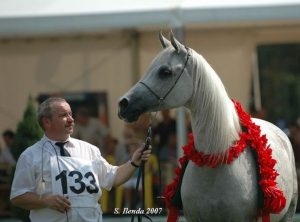
What he doesn’t like in the American system is the lack of separate points for movement. Horses trained in such a way, if they give their 100% in the pose, they lose about 30% of their moving abilities. In other words a horse “done” in American style, which normally would move for a 20 point mark, in this case would receive a 19. Because incomparably more time is spent there on perfecting that ideal “pose” and also because of the respect which the Americans implement in the horses, more so than you would see in Europe.
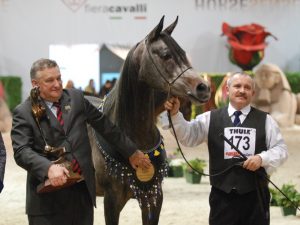
Jerzy Białobok, director of Michałów Stud, sums it all up: ”Mariusz’s success is the result of the fortunate meeting of a skillful, hard-working and responsible man and superb Michałów horses. At the show he literally blends in with the horse, like a good rider with his steed. For this work you need to have a gift from God and be stronger mentally than the horse – to impose on him your will with the force of your actions, which has nothing to do with the strength of the whip. Mariusz has that talent and keeps on honing it. At the stud we dealt with tens of people who wanted this job, but few have such inner willpower as him.”
Download the PDF version of the article»


